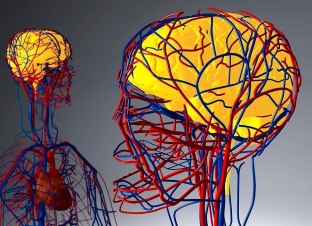Common pathologies are always in the center of attention of doctors and patients. Many myths have been created around such pathologies that mislead patients.
Concussion is a common neurological condition that accompanies most head injuries. Today, patients often seek to diagnose themselves and their loved ones based on popular misconceptions. Consider the main myths about concussion.
Major misconceptions and myths about concussion
Myth 1 "A concussion can be severe"
A concussion does not have a classification of severity, unlike a contusion, because there are no specific criteria for dividing them. In fact, any concussion is already severe.
Myth 2 "A concussion can be with damage to the bones of the skull"
The main criterion for diagnosing concussion is the absence of damage to the bones of the skull. A concussion of the brain may be accompanied by abrasions, bruises and bruises, but not a violation of the integrity of the skull. Therefore, in some cases, the patient should have an x-ray of the skull after an injury.
Does a concussion cause loss of consciousness or memory loss?
Myth 3 "After a concussion there is no memory loss, but there is a loss of consciousness"
In fact, loss of consciousness and loss of memory may or may not be present with a concussion, but are not a mandatory symptom. Loss of consciousness during a concussion lasts a few seconds. Consciousness is restored, after which memory loss develops. Amnesia can manifest itself in four variants – retrograde, anterograde, anteretrograde and congrade.
Types of memory impairment in concussion:
- Congrade amnesia is accompanied by a loss of memories of the very moment of the injury. This type of amnesia can hardly be called memory loss, as a fragment of consciousness falls out.
- Retrograde amnesia – accompanied by loss of memory about the events that took place on the eve of the injury. At the same time, long-term memory is not violated – patients forget the very last minutes before getting a concussion.
- Anterograde amnesia – characterized by loss of memory of events that were before the injury, and occurring after it.
Diagnosis, treatment and consequences of concussion
Myth 4 " Consequences and residual effects of a concussion remain for life"
The consequences of a concussion remain for a maximum of a few weeks, as a concussion is a mild form of TBI. Consequences remain after brain compression, contusion, bruising, or diffuse axonal injury.
Myth 5 "A concussion is always accompanied by vomiting"
Vomiting often accompanies a concussion. But the opinion that in the absence of vomiting there is no concussion – wrong. In some cases, nausea is present.

Myth 6 "A concussion does not require treatment"
This is the most common and life-threatening misconception. Treatment for a concussion is mandatory and includes bed rest, diuretics, nootropics, potassium supplements, and sedatives.
Myth 7 "The presence of changes in the brain"
A concussion differs from other brain injuries precisely in the absence of focal changes in the brain tissue. Therefore, the presence of foci of hemorrhage or other lesions on x-ray or MRI excludes the diagnosis of concussion.
Myth 8 “The more diagnostic methods – so much the better»
A neurologist's examination and some physical tests are required to make a diagnosis. The remaining studies will not bring any valuable information, but will hit the budget. The only thing that may be needed in case of controversial issues – this is an X-ray of the bones of the skull to exclude violations of the integrity of the bone structures.
Myth 9 "Concussion is treated by neurosurgeons"
As mentioned above, a concussion is not accompanied by a change in the brain tissue and a violation of bone integrity, therefore, neuropathologists are involved in the treatment of concussion.






Add a comment